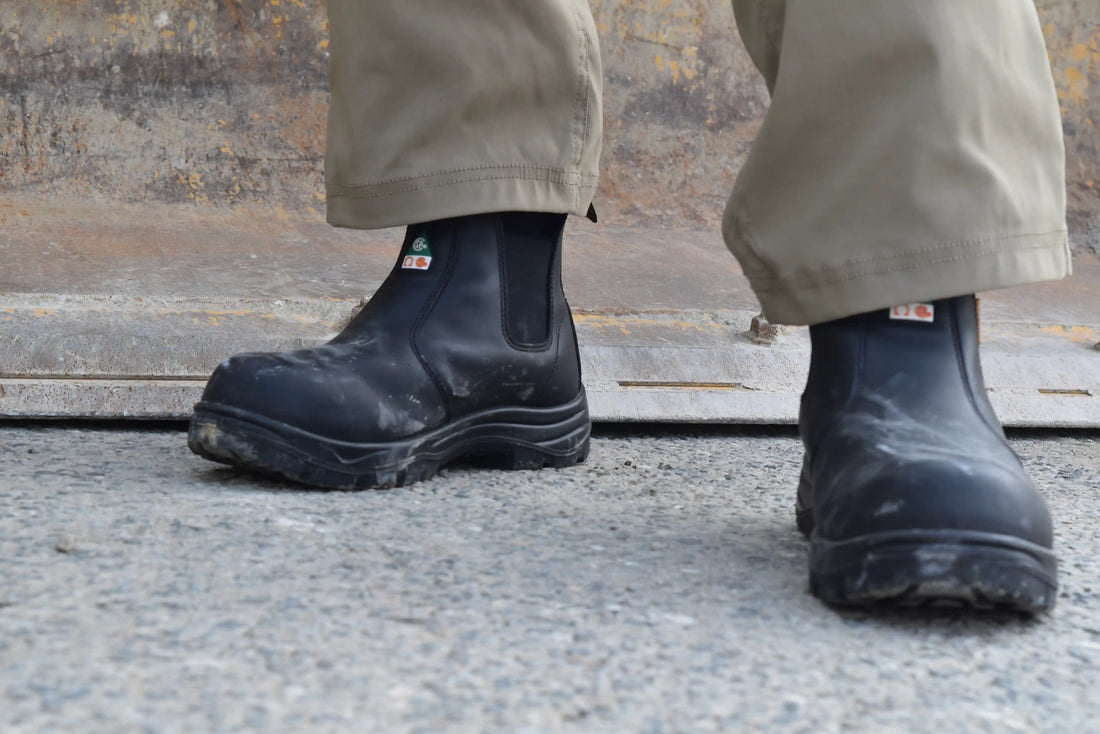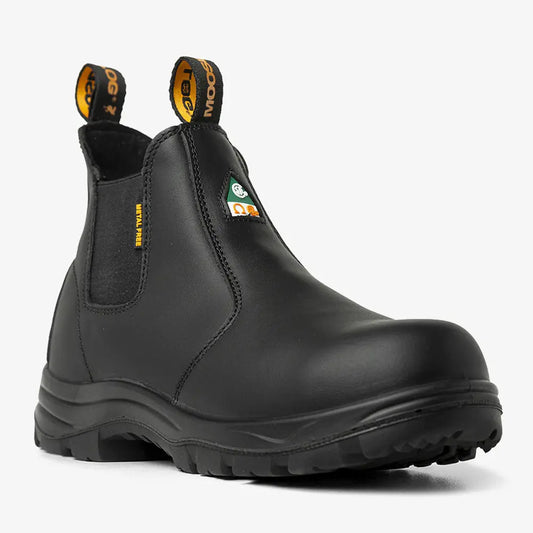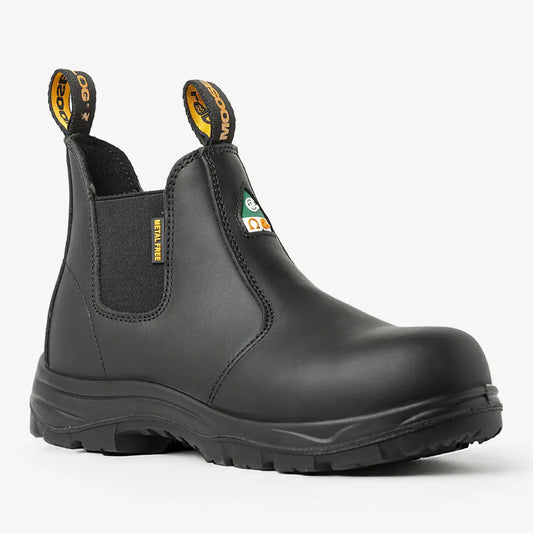
Best Work Boots for the Money: Value over Marketing | 2025 Edition
Let's break some myths today.
For decades, the work boot market has pushed one big idea and that's price equals quality. If a pair costs $300, it must be better than the one at $160, right? Not necessarily. In 2025, that mindset is starting to shift, thanks to new brands that deliver premium construction and certified protection without the big retail markup, pleasing investors, and marketing fees.
Stop Paying for Logos

You can pay more for a famous logo, but that logo will be covered in dirt and mud after your first shift anyway. What matters is materials and craftsmanship. At the end of the day, it truly is that simple.
A ton of boot companies in 2025 should be spending more on build quality, before they spend on branding. The truth is, once you’re on the job, you really gonna rely the protection of your foot on their marketing team? All safety boot companies are building to meet the same certifications anyway. Don't believe me? Show me numbers. Show me test results. Not a single company will even show their test scores, because it's all just a "pass".
The Brunt Dilemma
New brand, HUGE marketing budget. As a content creator myself, I actually like their videos. They’re extremely well made, and they do a good job showing real workers, really setting a new level in the safety footwear industry. But when you look at the actual product, the quality doesn’t match the marketing.

I was talking with our sourcing manager about Brunt. We mentioned how there’s been a flood of negative reviews even though the brand’s exploded in popularity over the past few years. She hadn’t seen the reviews, but immediately she said, “I know exactly why. It’s the cemented construction, isn’t it?”
Soles detaching. Structural failure. Interior sole collapse. These are the most common complaints about Brunt, classic signs of cemented construction. Which, ELI5, just means the sole is glued onto the upper. It’s generally the cheapest and weakest way to build a work boot. It shouldn’t take a YouTuber cutting the boot open to expose their fake “Goodyear welt.”
The "Made in the USA" Deception
We just talked about the deception of construction. Now let’s talk about the deception of origin. Here's the Loophole.
The phrase “Made in USA” doesn’t mean 100% American-made.
According to the FTC’s standard, a product can carry the label if it is “all or virtually all made in the United States.” That vague “virtually all” allows companies to:
- Import uppers, soles, or eyelets (often from China or Mexico).
- Assemble or stitch the final product in the U.S.
- Still legally stamp “Made in USA.”

That’s why brands like Thorogood and Danner quietly changed its branding to “Made in USA with USA and globally sourced components.” It’s technically honest but strategically phrased to sound fully domestic.
I know Americans are patriotic, but don't let it blind you. Do your own research. Even Canadians fall into the same trap. One of Amazon.ca's best sellers in safety boots, KPR, markets made in Canada. But we use the same materials that came from the same region in China.
“A lot of major manufacturers have moved overseas for one main reason: labor costs. If you can pay less for labor, make the same product at the same quality, and ship it across continents for less money, how do you incentivize building factories here under U.S. regulations?”
— Make Trades Great Again Podcast (Source)
So, What Should You Be Looking For?

Full-Grain Leather.
The strongest, most durable part of the hide that resists water and is breathable.
Direct-Injected or Welt Construction.
A direct fusion or physical stitch that bonds the sole to the upper so tightly that sole separation is almost never the first thing to fail on the boot.
Safety Certifications.
Explicitly look for the ASTM (usually under the shoe tongue) or Canadian CSA Green Triangle (visible green triangle and white rectangle with omega symbol) to verify tested protection.
Rubber Outsoles.
Dense, high-abrasion material that delivers maximum slip resistance and longevity.
Shock Absorbing Insoles and Midsoles.
Materials like quality PU foam or conforming cork that reduce fatigue and protect your joints on concrete.
Puncture Resistant Plate.
A flexible steel or composite plate integrated into the sole to shield against nails and sharp debris.
But most of all, transparency.
These are things you should always be looking out for. If a company makes it difficult to find the materials, the product simply will not deliver the quality you need.
Best Work Boots for the Money in 2025

Below is a direct comparison of the industry’s most respected boots, stacked up against MooseLog, so you can objectively see where the investment truly goes. (Fact checked by our sourcing manager).
| Feature | MooseLog Timber | Brunt Marin 6” Comp Toe | Timberland PRO Boondock 6” Comp Toe | Thorogood 804-4200 |
|---|---|---|---|---|
| Leather Type | Full-grain leather | Full-grain leather |
Unspecified |
Full-grain leather |
| Toe Cap | Composite | Composite | Composite | Steel |
| Construction / Midsole | Direct-injected PU | Cemented PU |
3/4 Goodyear Welt + Cemented EVA |
Goodyear Welt Rubber |
| Puncture Plate / Shank | Composite plate | Nylon shank | Composite shank | Composite shank |
| Outsole | PU + Rubber | Rubber | TPU | Rubber |
| Certifications | CSA Z195 & ASTM F2413 | ASTM F2413 |
ASTM F2413 (Some with CSA Z195) |
ASTM F2413 |
| Made In | China | China | Cambodia / Vietnam | USA (with imported materials) |
| Price (CAD, 2025) | $160–170 | $210–230 | $280–320 | $300–330 |
Conclusion: "Made in” means less than made well
Don't let the price tag or a country of origin label fool you; construction is what truly provides protection. When you filter out the marketing hype, the factors that matter are the quality materials and proven build techniques: full-grain leather, direct-injected soles, certified toe caps, and rubber outsoles engineered to grip to concrete floor.
Whether they're imported or domestic, the boots that last are the ones built correctly. Smart buyers in 2025 are realizing that the label "Made in [X]" is less important than how well a boot is made. So next time you're comparing brands, ask yourself: "Which boot is built with the highest-quality materials and most reliable construction?"
If you’re done paying extra for branding, check out our MooseLog Timber Composite Toe Work Boots that are CSA Z195-14 and ASTM F2413-18 certified for real-world safety.






